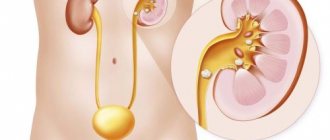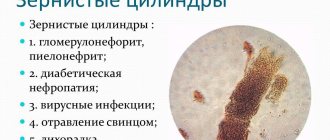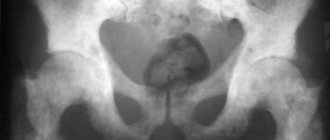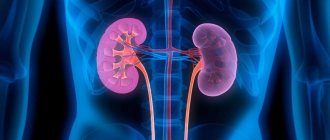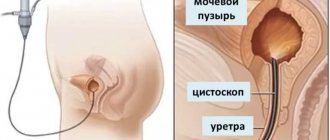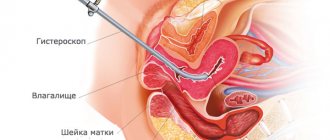Various diseases of the urinary system are quite common among adults and children of any age. It is very important to identify the presence of pathological processes in time, then it will be easier to get rid of them and avoid complications. One of the most important diagnostic factors for identifying such disorders is urinalysis.
Deviations from the norms of various parameters in the structure and composition of urine indicate the presence of inflammation or metabolic disorders. One of the most common abnormalities in urine tests is the presence of special formations, called cylinders because of their shape. If such formations are detected during the analysis, an additional examination is required, since they appear only when the urinary system is disrupted or other serious pathologies.
Casts in urine
Often, a urine test reveals sediment in the fluid with cylindrical particles that should not normally be present. The appearance of casts in the urine is called cylindruria.
But what does it mean? In general, these particles enter the urine from the renal epithelium, and their presence indicates the pathology of this particular organ.
Often, such a deviation is discovered when a person goes to the doctor for a medical examination or when specific complaints arise. To obtain more accurate data regarding the size, shape and number of cylinders, the following is carried out:
- urine test according to Nechiporenko;
- Zimnitsky test (allows you to evaluate the excretory function of the kidneys);
- daily urine output collection;
- research using the Reberg-Tareev method (filtration rate is determined);
- urine protein analysis.
Identification technique
Cylindruria is detected by a general urine test, carried out as a standard procedure for a general examination of the patient’s condition, as well as for the purpose of a comprehensive examination with suspicion of a certain disease.
In order to identify specific substances in analyses, the following types of studies are prescribed:
- collection of urine output over the past 24 hours;
- urine analysis using the Nechiporenko method, which is more accurate and complete than a general urine analysis;
- Reberg-Tareev test to determine the rate of kidney filtration;
- urine analysis using the Zimnitsky test method;
- urine test for protein content.
The Nechiporenko method is usually used in hospitals because it gives the most informative results. In outpatient clinics, it is a method of additional research when a general analysis does not provide a complete picture or there are results that raise doubts. In all these tests, specialists identify the number of cylinders per 1 milliliter of urine, taking into account sediment.
Daily diuresis is necessary for a quantitative study of the excreted fluid, which shows the quality of the renal system. The number of cylinders in urine excreted per day, their parameters and qualitative composition are measured, which contributes to the high-quality diagnosis of diseases. The Zimnitsky test is done to detect malfunctions in the kidneys, but not to determine the content of casts in urine.
More on the topic: How to treat genitourinary schistosomiasis?
During a clinical examination, the density of urine and its specific gravity are calculated, which makes it possible to make a preliminary diagnosis of the following diseases:
- a specific gravity greater than 1025 indicates the acute stage of pyelonephritis, severe dehydration, as well as uric acid diathesis in the child’s body;
- a specific gravity from 1002 to 1008 indicates remission of pyelonephritis in the chronic stage, as well as renal failure.
The Reberg-Tareev test reveals the ability of the kidneys to excrete, which is necessary to determine the etiology of their disease, which affects the tissue of the organ itself. A urine test for protein reveals proteinuria, and ultrasound is prescribed for the bladder and kidneys.
Analysis standards
Urine is a slightly acidic liquid (pH 5.5-7.0). The presence of pathological casts in the urine is indicated by increased acidity of the urine, as well as proteinuria (the appearance of protein).
Normally, single cylindrical hyaline microparticles (1 or 2) may appear. The detection of many casts in urine (hyaline and other types) during a general urinalysis indicates pathological processes occurring in the kidneys and urinary tract.
In general, the appearance of cylindrical microparticles already indicates a pathological process that develops in the renal tubules.
Therefore, after identifying them, it is necessary to conduct a kidney examination. There are different types of casts, each individual type indicates a specific disease, with the exception of hyaline casts, a small amount of which appears in the urine of healthy people due to physical overexertion, fast walking and running.
The appearance of casts in the urine of pregnant women is especially dangerous; the acceptable indicators for them are 1-2 hyaline bodies in the field of view.
It is of greater importance in cases of nephropathy and toxicosis, or in cases of nervous and physical stress. Cylinderoids are sometimes found in urine - cylindrical particles consisting of mucus.
In general, a distinction is made between true and false cylinders. The first group includes sedimentary elements of the hyaline, granular, epithelial, comatose, hemoglobin, as well as waxy, erythrocyte type and cylindroids. The category of false ones includes: leukocyte, mucus, urate particles.
Normal indicators
Urine is examined for the presence and type of inclusions using a light microscope. Normally, a healthy person may have one or two hyaline cylinders in the field of view; there are no other types of such sediment. This applies to both adult patients of both sexes and children of different ages.
Detection of a higher number indicates the development of inflammatory processes in the kidneys, and if inclusions of other types occur, it indicates the occurrence of pathological changes.
Hyaline casts
In general, hyaline casts in the urine are also found in healthy people; this is due to physical activity or nervous strain.
But their high rates already indicate various ailments in the body. They are formed only in an acidic environment. Under alkaline conditions, cylinders do not form or dissolve. However, this does not mean that there is no disease.
Hyaline casts consist exclusively of proteins released from the blood plasma in the kidneys. The latter, after passing through the distal part of the tubules, acquire a cylindrical shape.
A factor in this phenomenon may be impaired renal function, but it is also observed in other diseases. The presence of such sedimentary particles in the patient’s urine indicates such pathological phenomena as:
- glomerulonephritis;
- pyelonephritis;
- congestive cardiovascular failure;
- arterial hypertension;
- interstitial nephritis and other diseases characterized by increased protein content in the urine.
The appearance of hyaline sediment can also be caused by the use of diuretic drugs. In men, excessive consumption of meat products can lead to increased urine acidity. As a result, physiological proteinuria develops, which is manifested by the presence of hyaline casts.
In pregnant women, an increased number of hyaline casts in the urine indicates glomerulonephritis or latent pyelonephritis. But such a violation in the last trimester of pregnancy indicates impaired renal function.
FAQ
Question: A moderate increase in the number of hyaline casts was discovered in a child. I recently had chickenpox. Does this mean complications?
Answer: In children, it is possible to isolate cylindrical bodies against the background of fever and infectious diseases. If renal function is not impaired, deviations will affect only the hyaline casts. The phenomenon will disappear after some time, as the body recovers.
Question: Is cylindruria dangerous for pregnant women?
Answer: An increased number of bodies in the urine during pregnancy may indicate a latent course of inflammatory diseases or the initial stages of their manifestations. Sometimes the release of specific casts indicates preeclampsia, which can lead to premature birth. If the results of the analysis are unsatisfactory, you need to consult with your obstetrician-gynecologist; additional examination will be required in order to take timely measures.
Question: Can cylinders get higher due to yoga?
Answer: Any type of physical activity, even involving static tension and stretching of the ligaments, can provoke an increase in protein levels and the release of a larger number of cylinders than usual. This does not mean that sports are banned. You should avoid going to the gym 1–2 days before the test.
Question: The results of the urine test turned out to be simply terrible, there were abnormalities everywhere. It's strange, but I feel great. Could this be possible?
Answer: Most likely there is an error. Perhaps the rules for collecting and delivering biomaterial to the laboratory were violated, or violations were committed directly during the research. To get real results you need to remember that:
- urine is collected in the morning on an empty stomach;
- It is better to use a sterile pharmacy container;
- A polyethylene urinal will help to take a test in infants;
- if an adult is taking the test, only the middle portion of urine should go into the container (the initial and last portions are flushed down the toilet);
- Immediately close the glass tightly with a lid;
- you need to take him to a medical facility within 2 hours;
- It is undesirable to expose the biomaterial to cooling or heating, or leave it in sunlight.
Before taking the test, you must stop taking medications and alcohol. The day before, it is better not to eat a lot of meat or coloring foods (beets, carrots, citrus fruits). Also, do not expose yourself to physical and mental stress.
Question: Can cylindruria manifest itself with any symptoms?
Answer: The discharge of cylindrical bodies in the urine is not considered a disease, but is a symptom of kidney problems. Cylindruria has no specific symptoms. The general well-being of the patient is disturbed by signs of the underlying disease. The most common signs of dysfunction of the urinary system: urinary disorders, frequent urges, uncharacteristic color or smell of urine, the presence of pus, mucus, blood in it, pain in the lower abdomen, in the lumbar region, spasms when emptying the bladder.
Waxy cylinders
The detection of waxy casts in urine is a sign of serious diseases caused by impaired renal function. Waxy cylinders in urine look like a shapeless mass similar to wax. They have a yellowish tint, are opaque, and are slightly shorter than hyaline ones.
These particles are formed from hyaline and granular protein formations that are retained and denatured (destroyed under the influence of various factors) in the kidney tubules.
The reason for their formation is stagnation or obstructed outflow of urine. First, hyaline casts, while in the renal tubules, collect lipids and turn granular, and then an increasing number of destroyed epithelial cells settle on them.
The presence of such sediment in the patient’s urine indicates serious diseases, such as:
- malignant glomerulonephritis;
- amyloidosis;
- acute glomerulonephritis;
- chronic kidney disease (in later stages);
- nephrotic syndrome;
- chronic renal failure.
The presence of waxy particles in the urine of children and pregnant women is especially dangerous; it requires immediate identification of the source of the pathological process for further therapy.
Types of cylinders and reasons for their formation
Cylinders in the urine are formed by red blood cells, desquamated cells from the epithelium of the renal tubules, and also by protein. If the patient has followed a protein diet for a long time and also engaged in significant physical activity, an increased amount of protein, or hyaline casts, is found in the urine.
Hyaline
This type is formed by a protein that arises from the action of epithelial cells in the kidney tubules. The cells are transparent, colorless and round in shape, often detected in tests in patients.
In men, hyaline cells appear due to the predominance of a meat diet, which significantly increases the level of acidity in the urine and leads to physiological proteinuria. The same phenomenon is possible after intense physical activity.
In pregnant women, the content of hyaline casts indicates glomerulonephritis or latent pyelonephritis. This may also indicate a violation of the filtering ability of the kidneys, which is typical for pregnancy in the last trimester.
In children, hyaline cells indicate some diseases that do not directly affect the kidneys, but are detected in tests. These include rubella, whooping cough, chickenpox, polio, mumps or measles. If the temperature rises to 38 degrees, which is called low-grade fever, the percentage of protein excretion is significantly increased.
With febrile temperatures from 38.5 to 39 degrees and little drinking, dehydration occurs in the child's body. Thus, a significantly high temperature forms hyaline casts in urine tests in children.
Grainy
Granular cells are very reminiscent of hyaline cells, especially considering that they are based on the same protein from the epithelial cells of the renal tubules. Epithelial cells may adhere to the surface of hyaline bodies, which have disintegrated and formed a granular structure. This type of cylinders is determined by very serious pathologies of the renal tubules, which change their structure.
More on the topic: Symptoms of increased oxalate in urine
Substances of this type found in the urine of pregnant women and children indicate glomerulonephritis affecting the glomeruli. They are responsible for the formation of urine and filtering of blood. In an adult, the presence of granular cells in the sediment in the urine indicates glomerulonephritis, but with further examination other diseases can be identified: the presence of additional bends of the proximal and distal tubules, nephrolithiasis, loss of a large volume of fluid, polyuria, as well as damage to the tubular apparatus.
Waxy
The formation of cells of this type occurs from a protein that is denatured in the lumens of the renal tubules. Relative to the hyaline ones, these cylinders are shorter, opaque and have a yellow tint. Waxy cells appear due to stagnation of urine in the body or when there are disturbances in the outflow of urine.
In such conditions, the formed hyaline cylinders are transformed into granular ones, but, being in the lumen of the tubule for a long time, they collect a large number of destroyed epithelial cells on their surface and transform into waxy ones. If a patient’s urine contains an excess of all groups of cylinders, this indicates pathology of the tubules in the kidneys.
Often this phenomenon occurs with nephrotic syndrome, the main symptom of which is hypoproteinemia, hyperlipidemia, severe swelling of the limbs and face, as well as sufficiently expressed proteinuria. This condition is very dangerous for children and pregnant women, since the most thorough examination of the entire body is necessary to identify the primary pathology.
Pathological
In general, all cylinders that are detected in a clinical examination of a patient’s urine can be called pathological, since normally they should not be present at all. For all patients, especially young children, the elderly and pregnant women, the presence of leukocyte, epithelial or erythrocyte cells in the urine is not a good symptom that requires a comprehensive examination of the body.
Red blood cells
When hyaline bodies form, red blood cells and erythrocytes are layered on them. Such cells in the urine are detected more often together with hematuria, when blood discharge is present. This directly indicates problems with the patient's kidneys.
If red blood cells are detected, specialists make a diagnosis of glomerulonephritis in the acute stage, bleeding of the fornical type, thrombosis of the renal veins or neoplasms in the renal area
Leukocyte
The appearance of cells of this type is caused by inflammation and pyuria, in which a significant number of leukocytes are found in the urine. As a rule, these bodies are typical for analyzes of patients with exacerbations of chronic pyelonephritis with the release of purulent formations. This type of cast is extremely rare in urine tests in children.
More on the topic: In what cases is bladder urography prescribed?
Epithelial
Epithelial casts in urine are very rare, their occurrence is associated with changes in the renal glomeruli and tubules, which is associated with kidney transplantation and its rejection, intoxication of the body with heavy metals, lead, and also in case of overdose of medical drugs, for example, salicylates.
Pigment
Pigment casts in urine are fine-grained structures of yellow-brown, yellow or brown color. They consist mainly of hemoglobin, which is present in sediment during pathologies in the body.
Most often this occurs due to extensive trauma to the patient, intoxication with toxins, or blood transfusion that is incompatible with the Rh factor or group. It is also possible for these bodies to form during myoglobinuria, when the urine turns brown due to the special pigment myoglobin, which appears during the breakdown of protein in the muscles.
In pregnant women, the formation of pigment cell types may be due to the development of anemia and malnutrition. In children, pigment substances in urine are associated with the rare disease Marchiafava-Micheli hemoglobinuria.
Grainy cylinders
Particles of this type, found in urine sediment, are distinguished by clear contours and opacity. Granular cylinders are formed from a yellow mass consisting of damaged kidney epithelial cells.
They have an uneven surface, the graininess is caused by light-refracting fat particles deposited on these particles.
The presence of such proteins in urine is detected by analysis using osmic acid. The presence of granular (granular) casts in urine signals pathological phenomena in the kidneys.
They are formed in the kidney tubules as a result of glomerulonephritis (any form). The cause of their appearance can be amyloidosis, pyelonephritis and viral diseases that are accompanied by kidney damage.
The presence of granular proteins in the sediment also indicates problems such as diabetic nephropathy; they are also found in cases of fever and lead poisoning.
Normal analysis parameters
h2 1,0,0,0,0 —>
A general urine test is a priority diagnostic and preventive test. Based on the test results, a doctor of any profile can give a comprehensive assessment of the patient’s health status, including the functional activity of his kidneys. Deviations of the obtained indicators from the reference ones always attract attention. Unusual properties of urine may indicate the development of serious pathologies.
p, blockquote 2,0,0,0,0 —>
Table - Normal results of OAM
| Index | Norm |
| Color | Straw yellow |
| Transparency | Absolute |
| Smell | Weak specific |
| Relative density | 1.010‒1.025 g/l |
| Acidity | 5,0‒7,0 |
| Protein | 0‒0.03 g/l |
| Glucose | 0‒1.0 mmol/l |
| Ketone bodies | 0‒0.5 mmol/l |
| Bilirubin | 0‒8.5 µmol/l |
| Urobilinogen | 0‒35 µmol/l |
| Hemoglobin | Absent |
| Bacteria | None |
| Red blood cells | 0‒2 in p/zr |
| Leukocytes | 0‒5 in p/zr |
| Epithelium | 0‒5 in p/zr |
| Cylinders | 1‒2 hyaline |
| Crystals | Single |
| Yeasts | None |
| Parasites | None |
| Slime | + |
As can be seen from the table, 1-2 hyaline cylinders can be detected in the urine, which is considered a normal variant. However, if bodies of another type are detected, the alarm should be sounded. All other casts, except hyaline ones, appear in urine against the background of pathological conditions.
p, blockquote 3,0,0,0,0 —>
Red blood cell casts
Red blood cell casts appear due to severe diseases. They are formed from proteins and red blood cells, the latter enter the renal tubules due to disruption of the vascular wall of the renal glomeruli. These are very fragile compounds, so sometimes they may not be detected as a result of a general analysis.
These particles have a yellow-brown tint and have smooth contours. The appearance of this type of cylinders is associated with renal diseases such as glomerulonephritis, kidney tumors of various natures, renal infarction, renal vein thrombosis, etc.
Treating Level Changes
Therapy depends on the disease that caused cylindruria. In any case, kidney pathologies are treated in a hospital setting.
- Glomerulonephritis – bed rest, diet (table No. 7), diuretics (furosemide, hydrochlorothiazide), glucocorticosteroids (prednisolone) and (or) cytostatics (cyclophosphamide) are prescribed – pulse therapy for chronic GN, can be performed with plasmapheresis, antiplatelet agents (heparin), for arterial hypertension - ACE inhibitors (enalapril, captopril), detoxification, lipid-lowering therapy (statins), if post-infectious GN - antibacterial therapy.
- Pyelonephritis - bed rest, diet No. 7, drinking plenty of fluids, antibiotics (choice according to the microorganism found in urine culture), detoxification therapy, anti-inflammatory, antispasmodic, for high blood pressure - ACE inhibitors, beta-blockers.
- Nephrotic syndrome - diet, infusion therapy (reopoliglucin), glucocorticosteroids (prednisolone), cytostatics, diuretics, heparin, ACE inhibitors (Captopril, Enalapril), statins to lower cholesterol, antibiotics for bacterial infection.
Epithelial casts
The presence of epithelial casts in the urine indicates severe kidney damage, which is accompanied by glomerular degeneration. They are formed from proteins and epithelial cells that appear in the tubules as a result of the death of the epithelial layer.
Such particles are formed due to:
- nephrosis;
- acute nephritis;
- acute tubular necrosis;
- amyloidosis.
After a kidney transplant, the appearance of epithelial casts signals graft rejection. This type of sediment is also found in cases of poisoning with acetylsalicylic acid preparations, as well as heavy metals (mercury).
Where do the cylinders come from?
h2 2,0,0,0,0 —>
The filtration process in the kidneys is accompanied by the constant removal of certain substances from the body (excretion) and their absorption back into the bloodstream (absorption). When the balance between these mechanisms shifts, some compounds that were neither excreted nor absorbed may accumulate in the channels. The correct relationship between processes is maintained through nervous and humoral regulation. They ensure stability:
p, blockquote 4,0,0,0,0 —>
- tone of glomerular arterioles;
- volume of filtered blood;
- pressure;
- tone of mesangial cells (in glomeruli);
- activity of podocytes (which are responsible for the reabsorption of substances).
When the constancy of these mechanisms is disrupted, proteins can penetrate through the pores of the glomeruli and remain in the tubules. Their molecules combine, resulting in the formation of fairly large conglomerates. In most cases they consist only of Tamm-Horsfall protein and are released in very small quantities.
p, blockquote 5,0,0,0,0 —>
With pathological changes, the elements may include dead epithelial cells, immune bodies, red blood cells, pigments, salts, mucus and other substances. Hence the danger of the appearance of specific cylinders in urine. The likelihood of their formation is high in case of circulatory disorders in the kidneys, a decrease in the diameter of the tubules, a decrease in the rate of urine outflow or its stagnation. The most common triggers for the formation of cylinders are:
p, blockquote 6,0,0,0,0 —>
- heart failure;
- pathology of the renal vessels;
- disturbances in the outflow of urine;
- inflammatory changes in renal structures;
- tumors and neoplasms;
- infections;
- intoxication.
The appearance of casts in the urine is often accompanied by an increase in protein levels, as well as a decrease in its pH, since under such conditions favorable conditions arise for the formation of sediment.
p, blockquote 7,0,0,0,0 —>
- Microscopy of urine sediment: sediment in urine during pregnancy, normal, interpretation
Leukocyte casts
This type of sediment is formed from proteins and leukocytes and is found quite rarely; most often their appearance is caused by pyelonephritis. The detection of leukocyte casts indicates the development of inflammatory or infectious diseases in the kidneys.
They are also found in allergic nephritis, as well as acute post-streptococcal glomerulonephritis. Particles of this type of sediment are similar to epithelial cells, so as not to confuse them, urine analysis is carried out using staining.
Causes
Before talking about specific reasons, it is necessary to analyze the pathogenetic mechanism. The formation of cylinders is triggered by the following processes:
- Impaired renal circulation;
- Intoxication;
- An increase in plasma proteins and hydrogen ions in the glomerular ultrafiltrate;
- Damage and necrosis of the tubular epithelium;
- Inflammatory process;
- Narrowing and expansion of the diameter of the tubules.
The presence of cylindruria almost always indicates renal pathology. Let us examine in detail the reasons for the occurrence of cylinders:
- Increased physical activity , eating large amounts of meat, arterial hypertension, taking diuretics (typical for the hyaline type);
- Fever , infectious viral and bacterial diseases, injuries;
- Inflammatory and infectious pathologies of the kidneys (pyelonephritis, abscess, carbuncle, tuberculosis, parasitic nephritis, mycosis);
- Nephropathies of immune origin (glomerulonephritis, with systemic connective tissue diseases);
- Metabolic nephropathies (diabetic, amyloid, gouty);
- Secondary nephropathies (interstitial nephritis, circulatory disorders, hypertension, disorders of electrolyte metabolism);
- Toxic nephropathy (drug-induced, heavy metal poisoning, intoxication).
The nature of the formation of the casts is always renal, since they are created from a protein secreted by the thick ascending loop of Henle. Depending on the specific disease, in addition to casts, leukocytes, red blood cells, renal epithelium, salt crystals and mucus may be found in the urine.
Pigment cylinders
In texture, these elements are similar to granular cylinders and are distinguished by a yellow-brown or brown tint, due to the presence of blood in their composition.
The reason for the appearance of these microparticles may be hemoglobinuria, which develops as a result of transfusion of blood plasma of an inappropriate group to a patient. The formation of this type of sediment is sometimes associated with diseases accompanied by intoxication of the body.
Casts in urine in children
The release of casts in the urine of a child is a serious signal about the development of various kidney diseases. Elevated levels of hyaline microparticles may indicate diseases not related to the kidneys. These include measles, mumps, whooping cough, polio, chickenpox and rubella.
A provoking factor for the appearance of hyaline-type casts in a child’s urine can be high temperature. At subfebrile temperatures (37-38), protein excretion increases, and at febrile temperatures (38.5-39) and in conditions of insufficient fluid intake, it will lead to dehydration of the body.
The presence of granular microparticles in a child’s urine is a symptom of a disease such as latent glomerulonephritis. In this case, the glomeruli of the kidneys, which are responsible for the formation of primary urine, blood filtration and reverse osmosis, are affected.
A symptom that threatens the health of children is the appearance of a cylindrical, waxy-type sediment in the urine.
It indicates destruction of the epithelial layer of the tubules and is accompanied by symptoms of nephrotic syndrome. Identification of these particles requires an urgent examination of the child to determine the root cause and treat the kidneys.
The appearance of pigment-type casts in the urine of small children is sometimes a symptom of a very rare disease - paroxysmal nocturnal hemoglobinuria Marchiafava-Micheli, in which red blood cells are destroyed.
What is this?
Cylinders in urine are a type of sediment consisting of cylindrical components.
At the same time, the very presence of cylinders in the urine does not allow us to accurately determine the cause of their appearance. A specialist needs to identify their specific type. By identifying the real type of cylinders, one or another disease can be diagnosed. However, pathological casts in the urine, in fact, always have a renal origin, that is, the causes of such a symptom always lie in problems with the kidneys.
In human kidney tissue, cylindrical bodies are formed, the basis of which is protein, red blood cells and kidney cells. In this case, the urine cylinder itself may consist of one or a pair of components. This makes it possible to distinguish several types of formations.
The basis of protein elements is uroprotein. This is a Tamm-Horswall protein produced by the epithelium in the convoluted tubules of the human kidney.
Cylinders in urine should not normally be present or their single presence is allowed. If the level of elements is elevated, then we are talking about pathological processes in the kidneys.
The presence of casts in the urine is called cylindruria. Although it would be fair to note that in the body of a healthy person these components may also be present and not indicate a disease.
